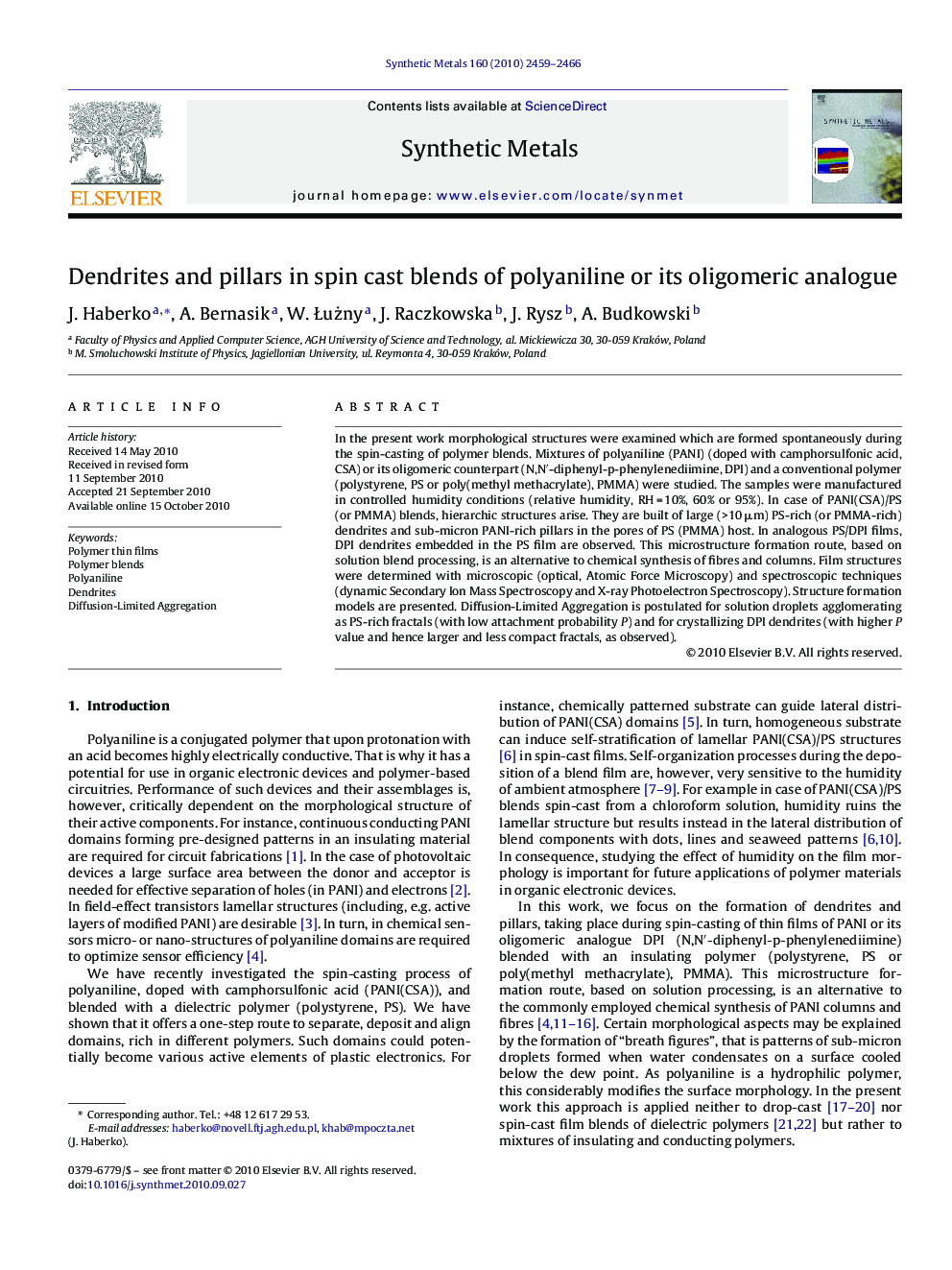| Article ID | Journal | Published Year | Pages | File Type |
|---|---|---|---|---|
| 1441576 | Synthetic Metals | 2010 | 8 Pages |
In the present work morphological structures were examined which are formed spontaneously during the spin-casting of polymer blends. Mixtures of polyaniline (PANI) (doped with camphorsulfonic acid, CSA) or its oligomeric counterpart (N,N′-diphenyl-p-phenylenediimine, DPI) and a conventional polymer (polystyrene, PS or poly(methyl methacrylate), PMMA) were studied. The samples were manufactured in controlled humidity conditions (relative humidity, RH = 10%, 60% or 95%). In case of PANI(CSA)/PS (or PMMA) blends, hierarchic structures arise. They are built of large (>10 μm) PS-rich (or PMMA-rich) dendrites and sub-micron PANI-rich pillars in the pores of PS (PMMA) host. In analogous PS/DPI films, DPI dendrites embedded in the PS film are observed. This microstructure formation route, based on solution blend processing, is an alternative to chemical synthesis of fibres and columns. Film structures were determined with microscopic (optical, Atomic Force Microscopy) and spectroscopic techniques (dynamic Secondary Ion Mass Spectroscopy and X-ray Photoelectron Spectroscopy). Structure formation models are presented. Diffusion-Limited Aggregation is postulated for solution droplets agglomerating as PS-rich fractals (with low attachment probability P) and for crystallizing DPI dendrites (with higher P value and hence larger and less compact fractals, as observed).
